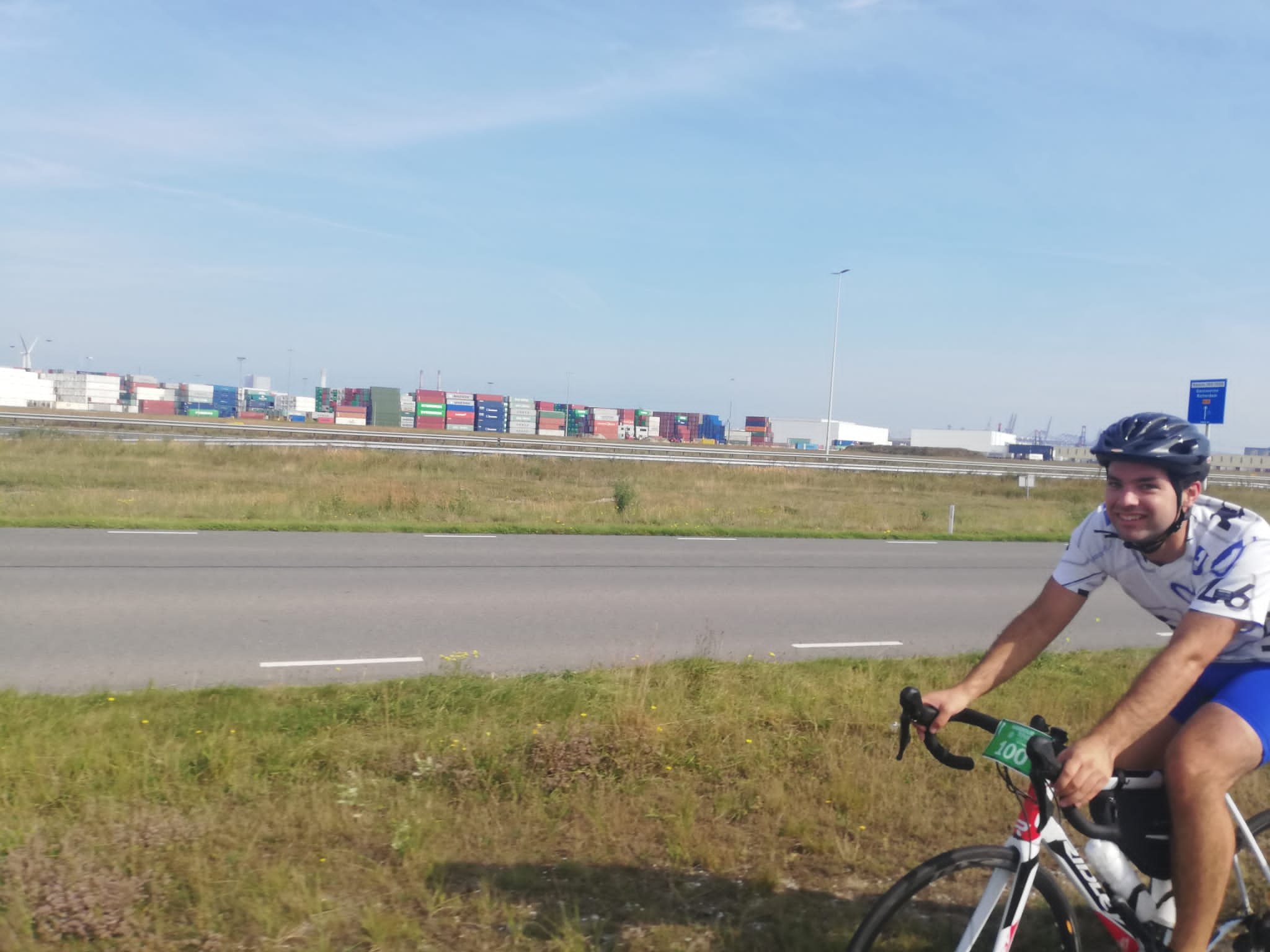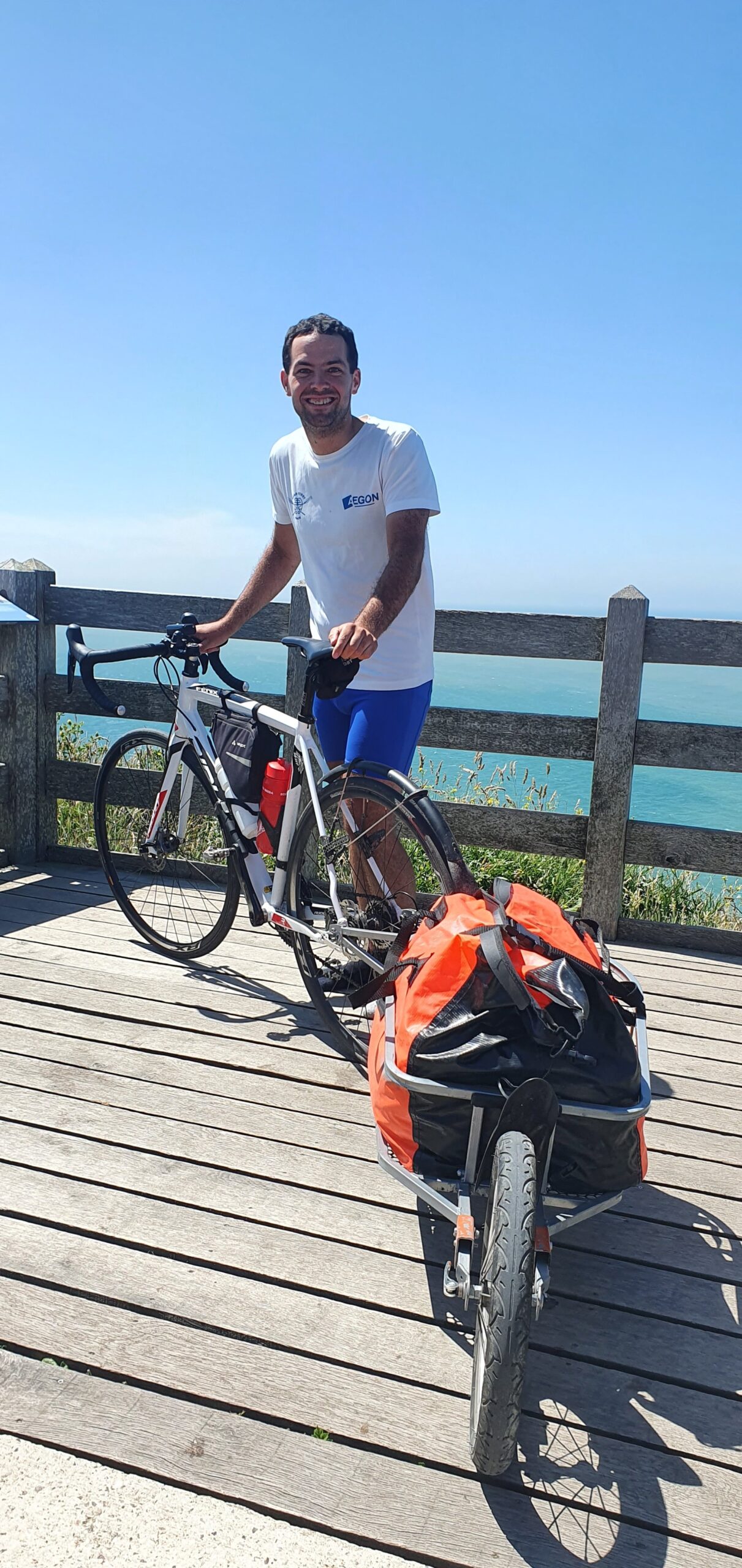Guidelines for pop-up bicycle lanes
Paper Cycling Research Board: part 1
From 5 to 7 October, the sixth annual Cycling Research Board (CRB) was held in Amsterdam. The CRB invites a variety of perspectives, especially from early career researchers. Participants are encouraged to submit work, even at an early stage, which reflects a variety of inter- and trans-disciplinary topics, including creative approaches to promoting cycling and innovative methodologies to study cycling. Amsterdam Bike City interviews the submitters of the three papers that were rated as this years’ best.
This time: Yvar de Waaij. During the first years of the coronavirus pandemic, temporary bicycle lanes appeared in many large cities. For his thesis, Yvar de Waaij examined in what form these pop-up bicycle paths appeared and how users experienced the safety and comfort of the several designs. His findings led him to making a guideline for the design of comfortable (pop-up) bicycle lanes.
The past year, Yvar completed his bachelor Civil Engineering at the Technical University in the Dutch city Delft with the thesis ‘Comfort guidelines for pop-up cycle paths’ (you can read the summary here). “The supervising professors thought the thesis was very interesting and submitted it for the 6th Annual Cycling Board. To my large surprise I was invited to Amsterdam, as youngest participant of the conference.” The Annual Cycling Board was held from 5 to 7 October and is organized each year by the University of Amsterdam, supported by the municipality of Amsterdam. People could submit a paper about their research in the field of cycling. A couple of Amsterdam bicycle experts chose the best papers. Yvar’s thesis was one of the best 3.
How did you come up with the idea for your thesis?
“I like to cycle large distances, I also go abroad by bike regularly. There you often see other ideas about cycling. Especially during the coronavirus pandemic. In many countries you could see bicycle lanes appearing out of nowhere, sometimes in just a week’s time. I thought it would be interesting to research this phenomenon.”

How did you tackle your research?
“I started with looking where these pop-up bicycle lanes were situated in France, Germany and the Netherlands. What are the guidelines? Of course there is already a lot of knowledge about what a regular, common bicycle lane should look like. Especially in the Netherlands there are a lot of guidelines, but you can also find them in France. The guidelines in Berlin differ completely from the Paris guidelines.
After that I started a summary in the Netherlands, Paris and Berlin. To find out what people think about these pop-up bicycle lanes. Are they completely accepted or not? And how do people use them, what type of lane do they prefer? I have subdivided the different types of lane in ‘road separations’ – beacons, barriers, poles you screw into the pavement or just markings – and ‘road layouts’: a one way bicycle lane at both sides of the road, two-way traffic on one side, or what you often saw in Paris: two-way traffic in the middle of the road. That sound very dangerous, until you ride your bike on it. To get on it can be quite chaotic, but when you’re on it, it’s actually quite comfortable. There is no hindrance from parking cars on the right side of the road or traffic from all small side streets.
I combined my desk research and the results from the summary to write a guideline: how to handle pop-up bicycle lanes and when do you use which road separation and road layout? I based the choice for road separation type on the maximum car speed and the available space. You may want a parking strip between the road and the cars, but if there is no room that will never happen. For the road layout I have made guidelines based on the question if bike traffic is local or not local and what type of bicycle lane you will be able to build.

Bron: Yvar de Waaij, eigen collectie
The guidelines are quite general. I’ve made a nice set-up, but it is not yet enough substantiated to really apply it. I have formulated boundaries on the basis of the availability of small or large space. Of course the question is: where exactly is that boundary? This is outside the scope of my research.
In essence, you can also apply the outcome to permanent bicycle lanes. Especially in cities only just starting with bicycle traffic, you often see they quickly start making a bicycle network with temporary bicycle lanes, because there is no money to make a permanent network. It also takes time to make such a network. But if you take a month to make barriers here and there on the roads, and slightly change road markings, in a short while you have a whole network without investing too much. As soon as the network is there, cyclists will start using it. Then as soon as a road needs to be renewed, often room is made for a bicycle lane. The temporary bicycle lane disappears, but a permanent lane appears.”
What challenge do you think Amsterdam is facing, bicycle-wise?
“In the inner city, the old urban area, there is not much room for traffic. Perhaps you should chose for shared spaces instead of clinging on to the old-fashioned ‘road – bicycle lane – sidewalk’ concept. I think the – essential and difficult – question should be: are you willing to sacrifice your bicycle lane for a shared space? In the inner city, it is about a conflict between pedestrians and cyclists, cars are already being banned there for a large part.”
What innovation from your hometown should Amsterdam look into?
“In Rotterdam and Den Bosch I am very charmed by the ‘bicycle traffic light information panel’, which indicates if you should cross an intersection with traffic lights clockwise or counterclockwise. You can see at what side the green lights are. I think they’re great, it often saves you a lot of time. I’ve never seen them somewhere else in the Netherlands, let alone abroad.”







